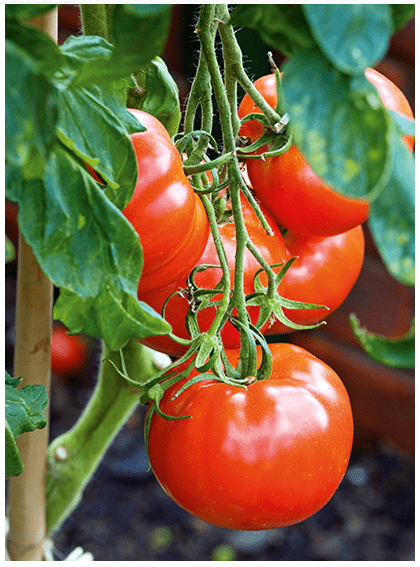Health and beauty
Health and beauty
There is no doubt that a diet rich in fresh produce leads to a healthy, vibrant body. Now researchers have gone further, identifying hundreds of active ingredients, known as phytochemicals, that give plants their beneficial health-enhancing properties. Here we show you how to make the most of them.
Vegetables and health
When it comes to staying healthy and preventing disease, no food group surpasses the amazing power of vegetables. The colorful and mouthwatering bounty of a farmers market, supermarket produce department, or your own garden offers hundreds of nutrients that not only taste good but also have medically proven health benefits.
Start your day with a breakfast of scrambled eggs with bell peppers, onions, and spinach, followed by a lunchtime salad”or plenty of crunchy lettuce and tomatoes in your sandwich. An afternoon snack of red bell pepper slices and baby carrots can keep you going until dinner, and a plate brimming with a rainbow of savory produce, from roasted asparagus and baked sweet potatoes to three-bean chili, fresh corn, winter squash, or thick vegetable soup.
Health-boosting advantages of a vegetable-rich diet
As well as being rich in a wide variety of vitamins and minerals, vegetables are an excellent source of fiber and are full of precious antioxidants. The health-boosting advantages of a diet with plenty of vegetables include:
Brighter moods When researchers from Dartmouth College and the University of Warwick in the UK surveyed 80,000 people, asking questions about their emotional state and their food choices, they found a fascinating correlation. Those who ate seven servings of vegetables a day were happier than those who skimped. French researchers recently found a similar food–mood trend. Why? Perhaps because vegetables are packed with antioxidants that are known to keep a lid on inflammation, which can have a negative effect on mood.
Lower risk for heart disease and strokes In two landmark studies of more than 100,000 women and men, Harvard School of Public Health researchers found that those who ate eight or more servings of produce a day were 30 percent less likely to have a heart attack or stroke compared with those getting fewer than two servings daily. All types of vegetables helped, but green leafy vegetables such as spinach, Swiss chard, lettuce, and mustard greens and brassicas such as broccoli, cauliflower, and cabbage seemed to offer the greatest protection.
Better blood pressure Vegetables are a rich source of potassium, magnesium, and calcium three minerals the body needs to help regulate blood pressure. Its no surprise, then, that one of the worlds most effective blood pressure“lowering eating plans, the DASH Diet short for Dietary Approaches to Stop Hypertension calls for plenty of vegetables. Getting a good amount of potassium can also help balance the effects of sodium in the diet, which may raise blood pressure for some people.
Protection from type 2 diabetes When scientists from the University of Leicester, UK, tracked the health and eating habits of 22,000 people, they found that those who munched through one and a half daily servings of leafy greens had a 14 percent lower risk for diabetes than those who ate fewer greens. No other single vegetable had this effect although eating a vegetable-rich diet in general helps protect against blood glucose problems.
A helping hand against cancer According to findings of the World Cancer Research Fund and the American Institute for Cancer Research, piling plenty of leafy greens, brassicas, onions, garlic, bell peppers, tomatoes, and other nonstarchy vegetables onto your plate every day probably protects against cancers of the mouth, throat, larynx, esophagus, and stomach.
A shield against vision loss Corn, kale, squash, spinach, and other deep green, yellow, or orange vegetables may be a special treat for sharp eyes. They contain two antioxidant slutein and zeaxanthin that are stored in the eyes, where they neutralize vision-robbing free radicals. This action may help protect against the development of cataracts, which cloud the lens of the eyes, and also against age-related macular degeneration, which damages the retina.









